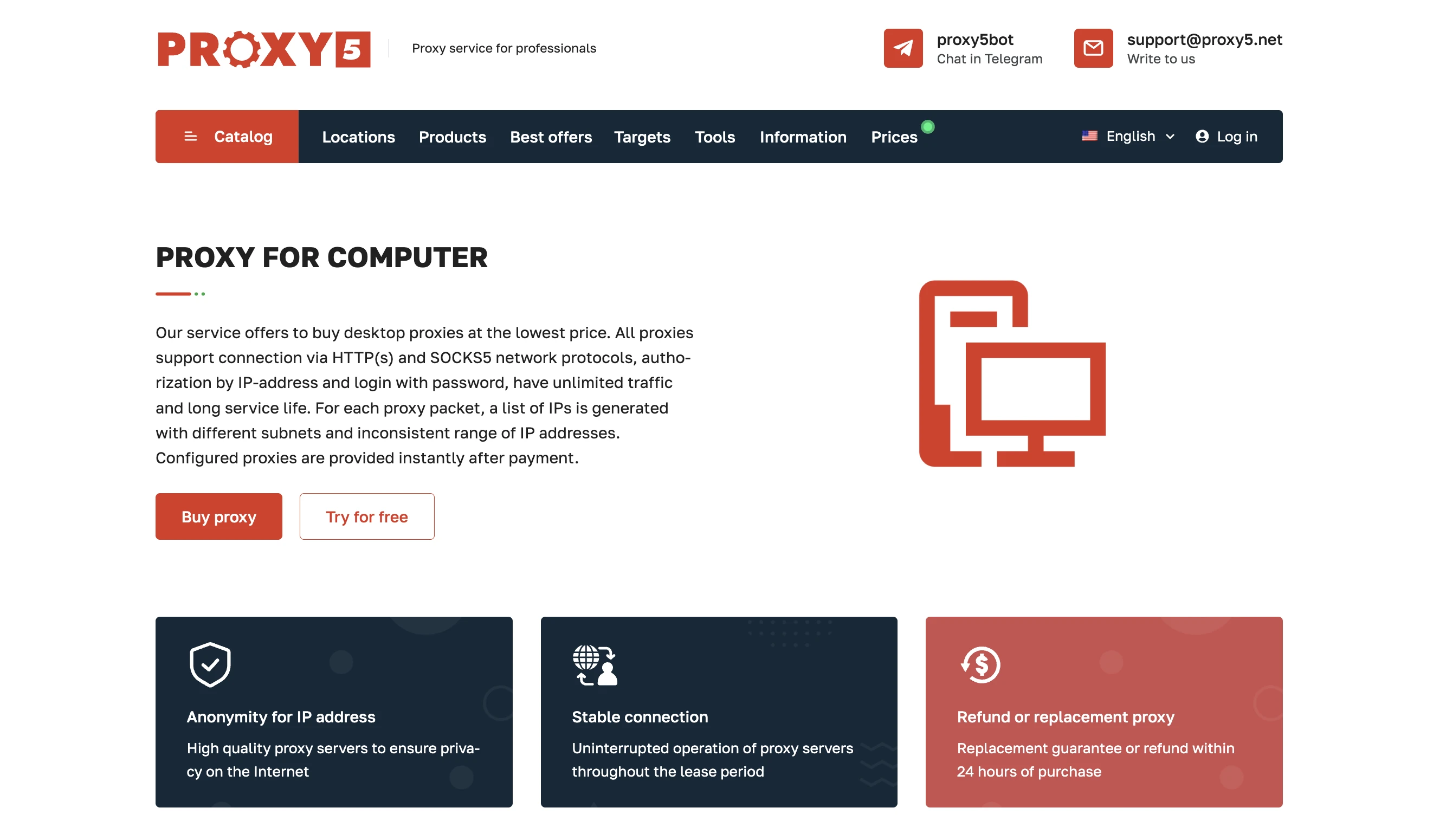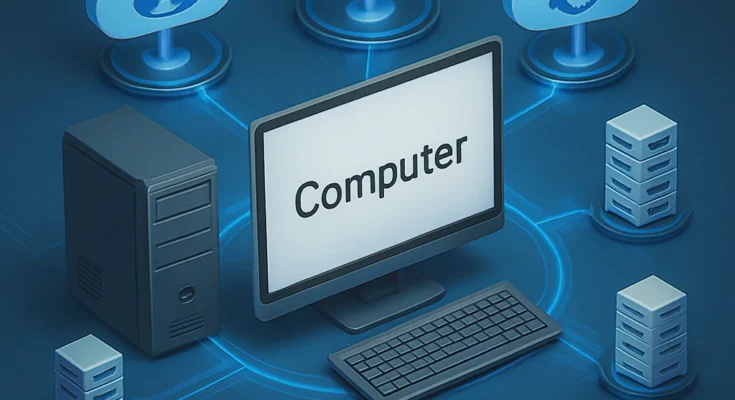In today’s digital world, where data is currency and privacy is gold, proxies have become a powerful tool for those who work with data daily. Whether you’re an SEO specialist scraping search engines, a marketer analyzing trends across regions, or a business automating tasks, proxies serve as digital middlemen between your computer and the internet. But what does this really mean?
When you connect your PC to the internet via a proxy, your real IP address is hidden. Instead, the websites you visit only see the proxy’s IP. This keeps your identity private, lets you bypass geo-restrictions, and ensures you don’t get blocked while performing large-scale data operations.
Here’s how proxies work step-by-step:
- Your computer sends a request (say, to open a webpage).
- That request first goes to a proxy server.
- The proxy server forwards the request to the actual destination site using its own IP.
- The site replies to the proxy, which then sends the info back to you.
Key Features of Proxies:
- IP Masking: Hides your computer’s real IP address.
- Geo-Switching: Lets you access web content as if you’re in another country.
- Load Distribution: Distributes traffic across many IPs to avoid blocks.
- Automation Friendly: Supports bots and scripts for data scraping or testing.
Proxies aren’t just for techies—they’re for anyone who wants reliable, anonymous, and region-specific internet access. And with the right provider, the setup is quick and seamless.
Where to Get Proxies for Your Computer?
If you’re searching for reliable proxies that deliver top performance without costing a fortune, Proxy5 is your answer. Designed for professionals who rely on stable, scalable proxy connections, Proxy5 offers affordable desktop proxies that are ready to go right after payment.

Proxy5 is built for SEO agencies, affiliate marketers, entrepreneurs, and data-driven enterprises. The platform delivers instant access to premium IPv4 proxies with the following standout features:
- Protocol Support: HTTP(s) and SOCKS5 supported.
- Compatibility: Works flawlessly with most apps, browsers, and software tools.
- Global IP Selection: Get access to proxies from multiple countries.
- Massive Pool: Over 150,000 IPs in rotation.
- Diverse Subnets: Proxies issued from 500+ unique Class C subnets.
- Unlimited Bandwidth: No restrictions on traffic volume.
- High-Speed Channels: All proxies are connected to 100 Mbps servers.
- Dual Auth Options: Login via username/password or whitelist your IP.
- Flexible Access: Download your proxy list via URL or manually copy-paste.
- IP Refresh: Refresh your IP list once every 8 days.
- Client Dashboard: Full proxy list and IP authorization management in one place.
Before buying, users can try a 60-minute free trial proxy with randomly assigned IPs—just enough time to test performance, compatibility, and speed.
Proxy5’s pricing is among the lowest in the industry, making it a budget-friendly choice for high-volume users. Choose your country, plan, and number of proxies—all customized for your needs windows 11 lizenz kaufen.
Paid vs Free Proxies: Which Should You Trust for Your Computer?
It’s tempting to use free proxies when starting out. They’re readily available and seemingly convenient. But that’s where the benefits stop. Free proxies come with serious drawbacks:
- Security Risks: Free proxies may log your data or inject ads/malware.
- Unreliable Speed: Shared by many users, slowing down your connection.
- Frequent Downtime: No guarantees the proxy will work tomorrow—or even in an hour.
- Geo-Limits: Limited country options, with no control over IP rotation or subnets.
- No Support: When things break, you’re on your own.
In contrast, paid proxies from Proxy5 offer:
- Guaranteed Uptime and connection stability.
- Private Access with dedicated or semi-dedicated IPs.
- Customer Support for quick resolutions.
- Customization: Choose country, quantity, refresh frequency, and protocol.
If you’re running automation tools, scraping, or doing SEO, a free proxy could ruin your project overnight. Paid proxies ensure peace of mind, legal compliance, and operational continuity.
How to Set Up a Proxy on Your Computer? A Step-by-Step Guide
Configuring a proxy on your PC is easier than it sounds. Whether you’re using Windows or macOS, setup takes just a few steps. Let’s go through the process for a typical Windows 10/11 environment.
Manual Setup for HTTP/HTTPS and SOCKS Proxies:
Step 1: Open Settings → Network & Internet → Proxy
Step 2: Scroll to Manual proxy setup
Step 3: Enable “Use a proxy server”
Step 4: Input:
- Address: (Proxy IP from Proxy5)
- Port: 8085 for HTTP/HTTPS. 1085 for SOCKS4/SOCKS5.
Step 5: Click Save and exit the settings.
Proxy5 allows setting up proxies without passwords using IP-whitelisting. Just add your IP via the dashboard and connect instantly—no password required.
How Users Are Using Proxies for Computers: Real-World Applications
IPv4 proxy have wide-ranging applications across industries. These aren’t just tools for anonymity—they’re engines of competitive digital strategies.
Popular Use Cases:
- SEO Monitoring – Track rankings without Google blocking your IP.
- Web Scraping – Collect data from search engines, marketplaces, or social media.
- Market Research – Analyze competitors’ ads and content from different regions.
- Ad Verification – Check how ads display in various geos.
- E-commerce Pricing Intelligence – Monitor pricing trends across platforms.
- Accessing Geo-Blocked Content – Browse as if you’re in another country.
- Account Management – Run multiple social media or e-commerce accounts safely.
- Automation Tools – Feed bots or scripts that require fresh IPs constantly.
- Cybersecurity Testing – Run tests with varied IPs for better detection.
- Brand Protection – Detect counterfeit content or sites from different regions.
Whether you’re scaling up your digital operations or protecting your brand’s reputation, using proxies is becoming non-negotiable.




